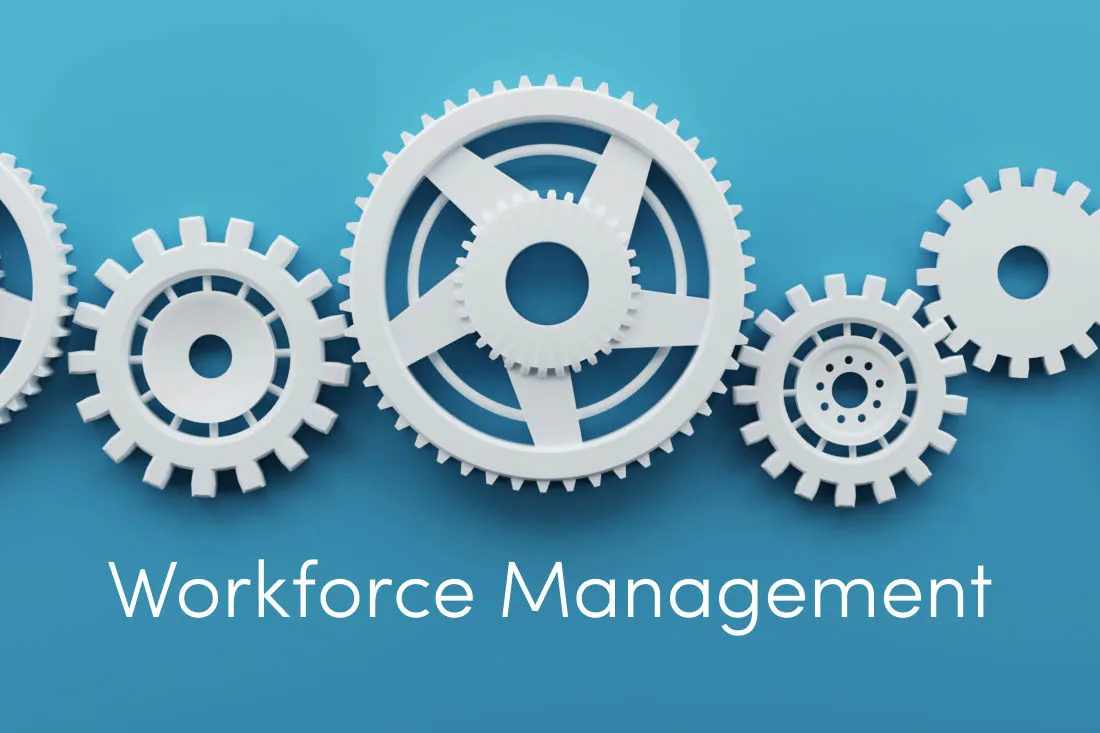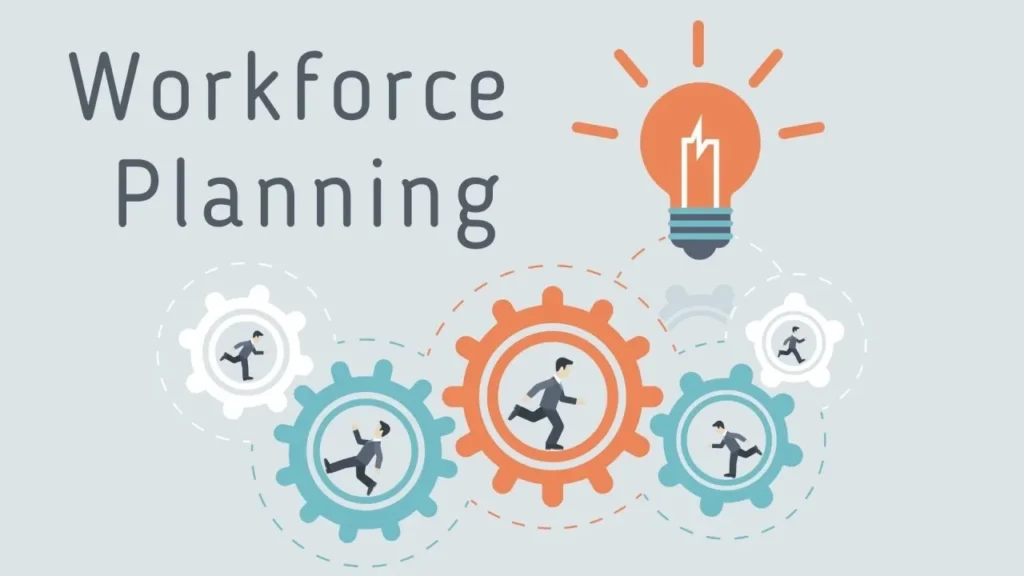
Executive Summary
Workforce management (WFM) is the strategic process of optimizing the productivity, performance, and engagement of an organization’s employees. It involves forecasting labor needs, scheduling employees efficiently, monitoring performance, and ensuring compliance with labor laws and organizational policies.
Effective workforce management allows organizations to balance operational demands with employee satisfaction, reduce labor costs, enhance productivity, and improve overall business performance. It integrates technology, data analytics, and human resources practices to align workforce capabilities with business objectives.
This guide explores the definition, components, benefits, strategies, challenges, and future trends in workforce management, offering organizations a comprehensive understanding of how to optimize their human capital.
Table of Content
Introduction
In today’s fast-paced business environment, workforce management has become a critical component for organizational success. With evolving customer expectations, dynamic business models, and complex labor regulations, managing employees efficiently is no longer optional.
Workforce management goes beyond traditional HR practices by combining planning, monitoring, analytics, and automation to optimize employee performance. From large enterprises to small businesses, workforce management solutions help organizations forecast labor needs, deploy staff effectively, monitor performance, and ensure compliance.
By implementing WFM practices, businesses can increase operational efficiency, reduce costs, and create a more engaged, productive workforce.
Core Concepts of Workforce Management
- Workforce Planning – Assessing current and future workforce requirements to meet business objectives.
- Scheduling and Shift Management – Ensuring the right employees are assigned to the right tasks at the right time.
- Time and Attendance Tracking – Monitoring employee hours, absences, overtime, and compliance with labor laws.
- Performance Management – Evaluating employee productivity, setting goals, and providing feedback.
- Compliance Management – Adhering to labor laws, regulations, and organizational policies.
- Employee Engagement – Creating a motivated workforce through recognition, development, and communication.
- Labor Forecasting – Predicting workforce needs based on historical data, seasonal trends, and business demands.
- Analytics and Reporting – Using data to make informed decisions about workforce optimization.
Key Processes in Workforce Management

1. Workforce Planning
Workforce planning is the foundation of WFM. It involves analyzing current workforce capabilities, identifying gaps, and projecting future labor needs.
- Skills Assessment: Evaluating employees’ skills and competencies to align them with business requirements.
- Gap Analysis: Identifying shortages or surpluses in staff for specific roles or functions.
- Succession Planning: Preparing employees for future leadership and critical roles.
2. Scheduling and Shift Management
Effective scheduling ensures that employees are assigned based on demand, skills, and availability.
- Dynamic Scheduling: Adjusting schedules in real time to meet changing operational needs.
- Shift Optimization: Ensuring proper coverage while minimizing overtime and labor costs.
- Self-Service Scheduling: Empowering employees to select preferred shifts within organizational guidelines.
3. Time and Attendance Tracking
Monitoring employee attendance and work hours is essential for operational efficiency and compliance.
- Time Clocks and Biometric Systems: Accurately capturing clock-in and clock-out times.
- Absence Management: Tracking leave, vacations, and sick days.
- Overtime Management: Monitoring extra hours to control costs and maintain legal compliance.
4. Performance Management
Performance management involves evaluating employee output and implementing strategies for improvement.
- Goal Setting: Establishing clear, measurable objectives for individuals and teams.
- Performance Reviews: Regularly assessing progress against goals and providing feedback.
- Recognition Programs: Rewarding top performers to encourage engagement and motivation.
5. Compliance Management
Adhering to labor laws and organizational policies is a critical aspect of WFM.
- Labor Law Compliance: Ensuring adherence to regulations regarding working hours, breaks, overtime, and minimum wage.
- Policy Enforcement: Applying consistent rules for attendance, behavior, and safety.
- Audit Readiness: Maintaining records to demonstrate compliance during inspections or audits.
6. Employee Engagement
An engaged workforce is more productive and less likely to turnover.
- Communication Channels: Open, transparent communication fosters trust and collaboration.
- Training and Development: Offering learning opportunities to enhance skills and career growth.
- Feedback Mechanisms: Providing avenues for employees to express concerns and suggestions.
7. Labor Forecasting
Accurate forecasting allows organizations to anticipate workforce demands and avoid overstaffing or understaffing.
- Historical Data Analysis: Using past trends to predict future labor requirements.
- Seasonal and Business Cycle Planning: Adjusting staffing levels according to peak periods.
- Demand-Based Allocation: Assigning staff based on projected workload and business priorities.
8. Analytics and Reporting
Data-driven insights help managers make informed decisions about workforce optimization.
- Productivity Metrics: Measuring output per employee or team.
- Cost Analysis: Tracking labor costs and identifying areas for savings.
- Predictive Analytics: Anticipating staffing needs, turnover, and potential performance issues.
Benefits of Workforce Management
- Operational Efficiency: Aligning staff with business demand to minimize downtime and maximize productivity.
- Cost Control: Reducing unnecessary labor expenses, overtime, and absenteeism.
- Enhanced Compliance: Ensuring adherence to labor laws and organizational policies.
- Improved Employee Productivity: Providing clear expectations, resources, and feedback to optimize performance.
- Employee Satisfaction: Engaged and motivated employees contribute to a positive workplace culture.
- Data-Driven Decision Making: Using analytics for workforce planning, performance management, and strategic initiatives.
- Business Agility: Quickly adapting staffing levels to meet market changes, seasonal demand, or unexpected events.
Workforce management works best when it’s supported by strong coordination, planning, and strategic oversight across teams and departments.
To understand how different departments align during operations or emergencies, explore What Is Resource Coordination in Incident Management: Definition, Role, and Benefits.
For insights into how organizations manage multiple interconnected initiatives while maintaining workforce efficiency, read The Ultimate Guide to Program Management: Processes, Tools, and Strategies.
And to see workforce management in action in customer-facing industries, check out How Hospitality Management Shapes Guest Experiences and Business Success.
Workforce Management Strategies
- Integrated Workforce Planning – Align staffing with business objectives and future growth.
- Automated Scheduling Systems – Use software to reduce manual errors and optimize shift planning.
- Real-Time Attendance Tracking – Monitor employee presence and absenteeism in real time.
- Performance Monitoring Tools – Use KPIs and analytics to track productivity and identify improvement areas.
- Compliance Automation – Ensure adherence to labor laws through automated alerts and reporting.
- Employee Engagement Programs – Foster a motivated, satisfied workforce through recognition, training, and communication.
- Predictive Analytics – Anticipate staffing needs, reduce turnover, and plan for future workforce demands.
- Flexible Work Arrangements – Implement remote work, hybrid schedules, or flexible hours to improve employee satisfaction.
- Continuous Learning and Development – Invest in upskilling employees to meet changing business needs.
Workforce Management Tools and Technologies
- Workforce Management Software: Kronos, ADP Workforce Now, SAP SuccessFactors, UKG Pro
- Scheduling Platforms: Deputy, When I Work, Shiftboard for automated and flexible scheduling
- Time Tracking Tools: TSheets, Clockify, Hubstaff for attendance monitoring
- Performance Analytics: BambooHR, Lattice, 15Five for employee performance insights
- Predictive Analytics Platforms: Tableau, Power BI, Workday Analytics for forecasting labor needs
- Compliance Management Tools: Zenefits, Gusto for labor law adherence and policy enforcement
Challenges in Workforce Management

- Managing workforce variability and unpredictable demand
- Balancing labor costs with productivity requirements
- Ensuring compliance with complex labor laws and regulations
- Addressing employee engagement and retention issues
- Integrating multiple workforce management systems and data sources
- Predicting and mitigating turnover or skills gaps
- Adapting to remote or hybrid work environments
Key Metrics and KPIs
- Employee Productivity Rate: Output per employee or team per hour.
- Absenteeism Rate: Percentage of workdays missed due to unplanned leave.
- Overtime Hours: Additional hours worked beyond scheduled shifts.
- Employee Turnover Rate: Frequency of workforce attrition over a period.
- Labor Cost per Employee: Total labor costs divided by the number of employees.
- Schedule Adherence: Percentage of employees working according to assigned schedules.
- Compliance Rate: Adherence to labor laws, company policies, and safety regulations.
Real-World Applications
- Retail Workforce Management: Aligning staffing with peak shopping hours and seasonal demand.
- Healthcare Workforce Management: Scheduling nurses, doctors, and support staff to meet patient needs.
- Call Center Workforce Management: Forecasting call volumes, scheduling agents, and monitoring performance.
- Manufacturing Workforce Management: Planning shifts, tracking productivity, and managing labor costs.
- Hospitality Workforce Management: Optimizing staff deployment in hotels, restaurants, and resorts.
- Field Services Workforce Management: Scheduling technicians, tracking tasks, and ensuring timely service delivery.
Common Misconceptions
- Workforce Management Is Only About Scheduling: It encompasses planning, performance, compliance, and engagement.
- It Only Applies to Large Organizations: Small and medium businesses benefit from WFM practices.
- Automation Eliminates Human Oversight: Technology enhances decision-making but requires management input.
- It Reduces Employee Flexibility: WFM can increase flexibility through self-service scheduling and remote work options.
- It’s Only About Cost Reduction: It also improves productivity, engagement, and strategic alignment.
Future of Workforce Management
- AI-Driven WFM: Predictive scheduling, task optimization, and workforce analytics.
- Hybrid and Remote Work Integration: Managing distributed teams effectively with technology.
- Advanced Analytics: Real-time insights for decision-making and workforce forecasting.
- Employee Experience Focus: Engagement, well-being, and career development integrated into WFM.
- Automation and Robotics: Leveraging automation for routine administrative tasks, freeing human resources for strategic roles.
- Sustainability and ESG Alignment: Incorporating social and environmental responsibility into workforce planning and policies.
Conclusion
Workforce management is a strategic approach to optimizing employee productivity, engagement, and organizational performance. By integrating workforce planning, scheduling, attendance tracking, performance management, and analytics, organizations can ensure that labor resources are effectively aligned with business goals.
Adopting workforce management practices enables businesses to reduce costs, improve compliance, enhance employee satisfaction, and adapt to changing market dynamics. As technology continues to evolve, workforce management will increasingly rely on predictive analytics, automation, and employee-centered strategies to drive business success.


